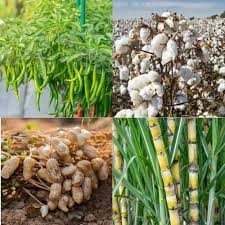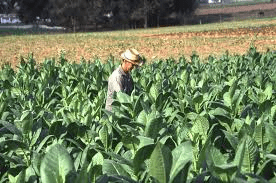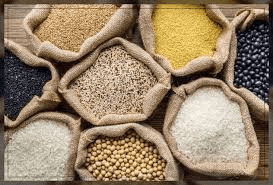Food and cash crops play crucial roles in agriculture and the economy. Food crops are primarily grown to feed people, while cash crops are cultivated for sale and profit.
Understanding the differences and importance of these crops can help us appreciate agriculture’s impact on our lives and the economy.
Food crops include grains, vegetables, and fruits that provide essential nutrients for daily consumption. Cash crops, on the other hand, are often high-value crops such as coffee, cotton, and tobacco, which are sold in local and global markets. Both types of crops are vital for food security and economic stability.
In this article, we will explore the major food crops, key cash crops in global agriculture, and regional variations in crop production.
Overview of Major Food Crops
1. Rice: Rice is a staple food for more than half of the world’s population, especially in Asia. It thrives in warm, wet climates and is usually grown in flooded fields, known as paddies. The main varieties include white rice, brown rice, and jasmine rice.
2. Wheat: Wheat is another essential food crop, widely consumed around the globe. It is used to make bread, pasta, and other products. Wheat grows best in temperate climates and requires well-drained soil. Major varieties include hard red wheat, soft red wheat, and durum wheat.
3. Maize (Corn): Maize, also known as corn, is a versatile crop used for food, animal feed, and industrial products. It grows in various climates and is often grown in rotation with other crops to enhance soil health. Sweet corn and field corn are common varieties.
4. Potatoes: Potatoes are a nutrient-rich tuber that grows underground. They are a staple food in many countries and can be prepared in various ways. Potatoes thrive in cooler climates and are usually grown in well-drained, fertile soil.
5. Cassava: Cassava is a drought-tolerant root crop widely grown in tropical regions. It provides a significant source of carbohydrates and is often used to make flour, tapioca, and other food products.
These food crops are fundamental for feeding the growing global population and ensuring food security.
Key Cash Crops in Global Agriculture

1. Cotton: Cotton is a vital cash crop used in the textile industry. It thrives in warm climates and is grown in many countries, including the United States, China, and India. Cotton requires a lot of water and careful management to avoid pest infestations.
2. Coffee: Coffee is one of the most popular beverages worldwide and a significant cash crop for many countries in Latin America, Africa, and Asia. It grows best in high-altitude, tropical regions with rich soil. The main types are Arabica and Robusta.
3. Tobacco: Tobacco is a cash crop used primarily for making cigarettes and other tobacco products. It requires specific growing conditions, including warm temperatures and well-drained soil. Major producers include the United States, China, and Brazil.
4. Sugarcane: Sugarcane is a tropical plant grown for its sweet juice, which is processed into sugar and other products. It requires plenty of sunlight and water. Key producing countries include Brazil, India, and China.
5. Cocoa: Cocoa is the primary ingredient in chocolate and is a significant cash crop in countries like Ivory Coast and Ghana. It thrives in humid, tropical climates and requires careful management to produce high-quality beans.
Cash crops are essential for generating income and supporting the livelihoods of farmers and communities around the world.
Regional Variations in Crop Production
1. Asia: Asia is the leading producer of rice, with countries like China and India dominating the market. Wheat is also widely grown in northern regions. The tropical areas of Southeast Asia are known for their diverse fruit and vegetable production.
2. Africa: In Africa, maize and cassava are staple food crops, while cash crops like coffee and cocoa are essential for export. The climate varies from arid to tropical, allowing for different types of agriculture. For example, Ethiopia is famous for its coffee, while West Africa is known for cocoa.
3. Europe: Europe has a temperate climate that supports the growth of wheat, barley, and potatoes. Many countries have embraced sustainable farming practices, focusing on organic crops and environmentally friendly methods.
4. North America: The United States is a significant producer of corn and soybeans, which are vital for both food and animal feed. The climate varies from region to region, allowing for diverse crop production, including fruits and vegetables in California.
5. Latin America: Countries in Latin America, such as Brazil and Colombia, are major producers of coffee, sugarcane, and tropical fruits. The region’s tropical climate is ideal for diverse crop production.
Factors Influencing Crop Choices
1. Climate: The climate of a region is a crucial factor. Some crops thrive in warm, tropical climates, while others prefer cooler temperatures. Farmers must consider the temperature, rainfall, and seasonal variations when selecting crops.
2. Soil Type: Different crops require specific soil types for optimal growth. For instance, root vegetables like carrots prefer sandy soils, while rice grows best in clay soils that retain water.
3. Market Demand: Farmers often choose crops based on market trends and consumer demand. If there is a high demand for organic vegetables or a particular cash crop, farmers may adjust their planting strategies accordingly.
4. Economic Viability: The potential profitability of a crop influences decisions significantly. Farmers assess production costs, market prices, and possible returns on investment to make informed choices.
5. Pests and Diseases: The prevalence of pests and diseases in a region can impact crop selection. Some farmers might choose resistant varieties or crops less affected by local pests.
6. Agricultural Practices: Farmers’ experience, available technology, and farming methods also affect crop choices. Those using sustainable practices might opt for diverse crops to enhance soil health and reduce dependency on chemicals.
Understanding these factors helps farmers make informed decisions that align with environmental conditions, economic needs, and market opportunities.
Read Also: Agricultural Tillage Practices
Economic Impact of Food and Cash Crops

1. Food Security: Food crops ensure that communities have access to necessary nutrients. By producing staple foods, farmers contribute to food security, which is vital for public health and social stability.
2. Employment Opportunities: Crop production creates jobs in farming, processing, transportation, and retail. This employment is essential for rural economies, providing livelihoods for millions of people.
3. Export Revenue: Cash crops often generate substantial revenue through exports. Countries that produce commodities like coffee, cocoa, or cotton can boost their economies by accessing global markets.
4. Economic Development: The growth of agriculture can lead to overall economic development. Increased crop production can stimulate related industries, enhance infrastructure, and promote investment.
5. Local Markets: Food crops support local markets by providing fresh produce to communities. This fosters local economies and reduces reliance on imported foods.
By understanding the economic impact of food and cash crops, stakeholders can develop strategies to enhance agricultural productivity and sustainability.
Challenges Facing Crop Production
1. Climate Change: Changing weather patterns, including extreme temperatures and unpredictable rainfall, impact crop growth. Farmers must adapt to these changes, which may require new techniques and technologies.
2. Pests and Diseases: The increasing prevalence of pests and diseases poses significant threats to crop yields. Farmers need effective pest management strategies to protect their crops.
3. Soil Degradation: Intensive farming practices can lead to soil degradation, affecting fertility and productivity. Issues like erosion, nutrient depletion, and salinity must be addressed to maintain healthy soils.
4. Water Scarcity: Many regions face water shortages, making irrigation challenging. Efficient water management practices are essential to ensure crops receive adequate moisture.
5. Market Fluctuations: Price volatility for both food and cash crops can impact farmers’ income and investment decisions. Farmers need to navigate these market changes to remain profitable.
6. Access to Technology: Limited access to modern farming technology can hinder productivity. Farmers in developing regions may struggle to adopt new methods that improve yields and sustainability.
Addressing these challenges requires collaborative efforts from governments, organizations, and farmers to develop effective solutions.
Read Also: Maggot Feeding: Can You Feed Fishes with Maggots?
Sustainable Practices in Crop Cultivation

Sustainable agricultural practices are essential for ensuring long-term productivity and environmental health.
1. Crop Rotation: Rotating different crops in a field helps maintain soil fertility, reduce pests, and prevent diseases. This practice promotes biodiversity and can enhance overall yields.
2. Organic Farming: Organic farming focuses on using natural inputs and methods, avoiding synthetic chemicals. This approach improves soil health and reduces environmental impact while producing high-quality crops.
3. Conservation Tillage: Minimizing soil disturbance through conservation tillage helps maintain soil structure and moisture. This practice also reduces erosion and supports healthy soil ecosystems.
4. Integrated Pest Management (IPM): IPM combines biological, cultural, and chemical practices to manage pests sustainably. This approach reduces reliance on pesticides and enhances pest control efficacy.
5. Water Management: Efficient water management practices, such as drip irrigation, help conserve water and ensure crops receive adequate moisture without waste.
6. Agroforestry: Incorporating trees into crop systems can enhance biodiversity, improve soil health, and provide additional income sources. Agroforestry supports sustainable land use and reduces deforestation.
By adopting these sustainable practices, farmers can enhance crop productivity, protect the environment, and contribute to a resilient agricultural system.
Read Also: Measurement and Definition of the term water yield

